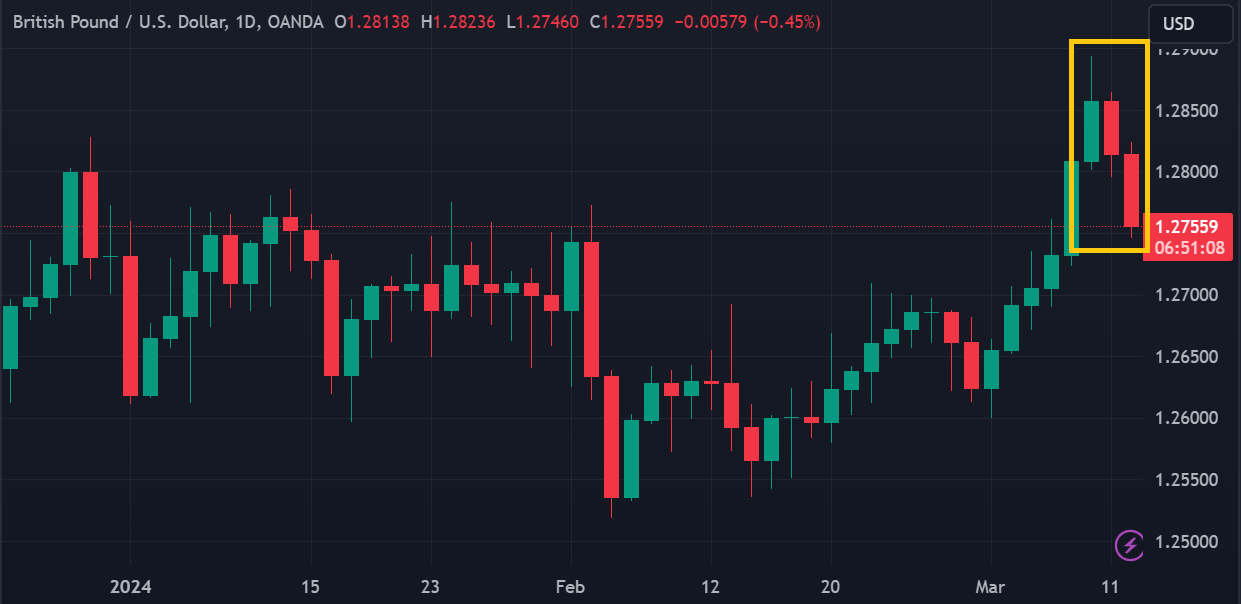Today's UK employment data release undermined the Pound Sterling's position versus USD and EUR. Here's why.
The Pound Sterling was one of the best-performing currencies last week but immediately reversed course in this week's trading. Sterling weakened from the opening of the week, then its slump accelerated after the release of UK employment data in the European session on Tuesday (12/March). By the time we entered the New York session, GBP/USD had fallen around 0.5% to a low of 1.2750s.

The UK labor data for January 2023 showed very disappointing figures. Wages grew at the slowest pace since October 2002. The unemployment rate increased surprisingly from 3.8% to 3.9%, whereas the previous consensus expected it to stagnate.
This situation prompted market participants to advance expectations of an early BoE rate cut. Recent market data suggests there is about a 50% chance of a BoE rate cut starting in June, although the majority still believe the policy change will only begin in August.
With Sterling's lead last week relying on higher interest rate expectations, this week's shift in market speculation immediately undermined its position versus USD and EUR. GBP/USD slipped around 0.5%, while EUR/GBP climbed around 0.3%. Some experts also started recommending to short GBP.
"We open a buy EUR-GBP trade idea," says Dominic Bunning, Head of European FX Research at HSBC, following the release of data on Tuesday that showed an ongoing loosening in labour conditions. "Today's labour market data showed some softness versus expectations, with a rise in the unemployment rate, a decline in total employment, and slower than expected wage gains," says Bunning.
HSBC experts think EUR/GBP has found its bottom at the long-term support level of 0.8500, so they are interested in profiting from GBP's weakness against EUR. They set a target for EUR/GBP to return to 0.8680.

 Dedicated FREE FOREX VPS
Dedicated FREE FOREX VPS Free FOREX Virtual Private Server
Free FOREX Virtual Private Server MT4 Demo Contest, Get $500
MT4 Demo Contest, Get $500 Sign Up for an Account, Claim 60% Deposit Bonus
Sign Up for an Account, Claim 60% Deposit Bonus Free MT4/MT5 VPS 2024
Free MT4/MT5 VPS 2024 Send E-mail and Get Free Merchandise
Send E-mail and Get Free Merchandise $1K Refer a Friend Bonus for Pepperstone Pro clients
$1K Refer a Friend Bonus for Pepperstone Pro clients Maximize Your Earnings with 100% Deposit bonus
Maximize Your Earnings with 100% Deposit bonus Trade to Win, $5,000 Monthly Demo Contest
Trade to Win, $5,000 Monthly Demo Contest Claim 30% + 15% Deposit Bonus from LiteFinance
Claim 30% + 15% Deposit Bonus from LiteFinance






